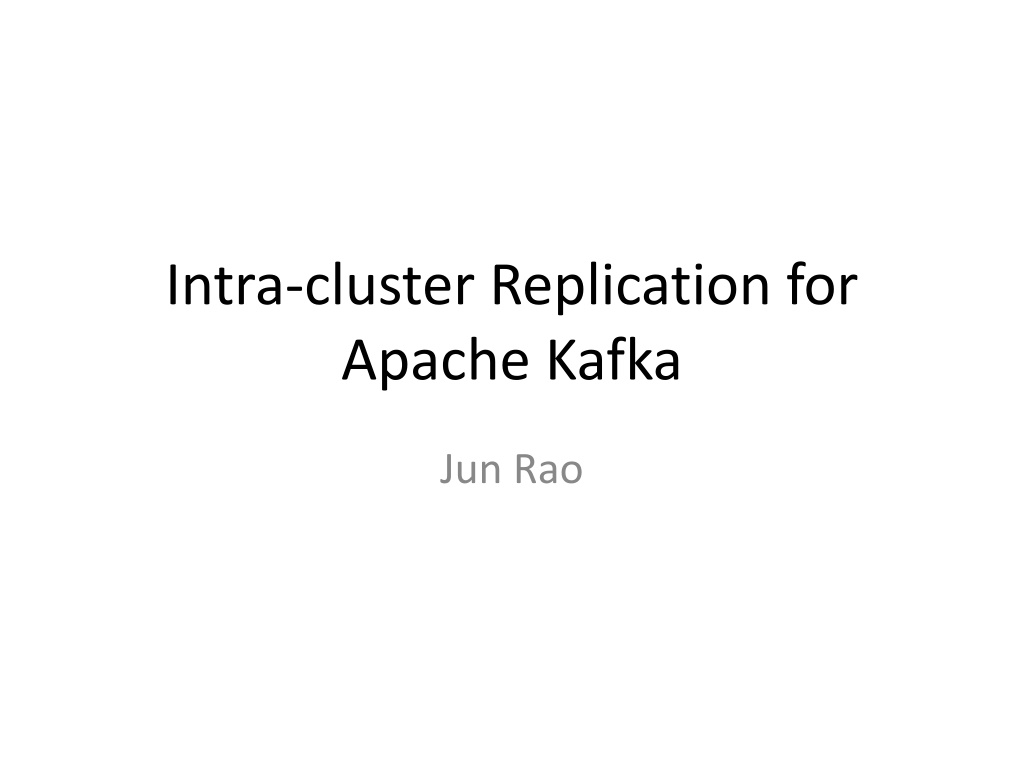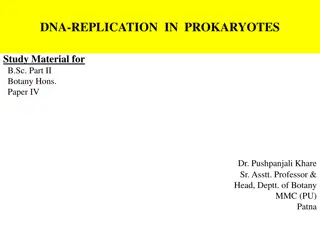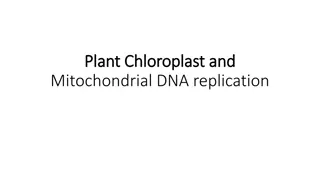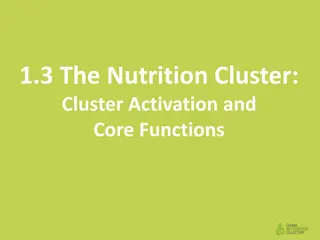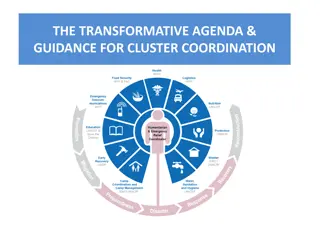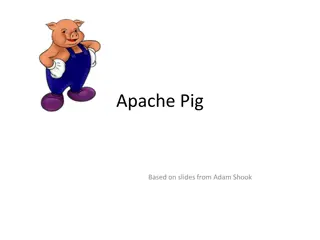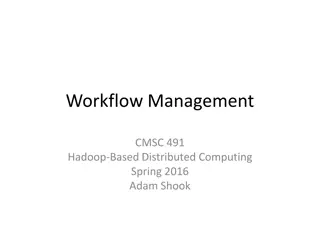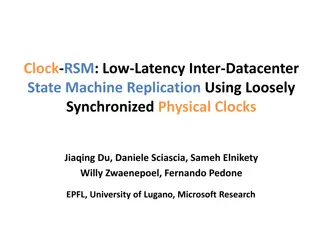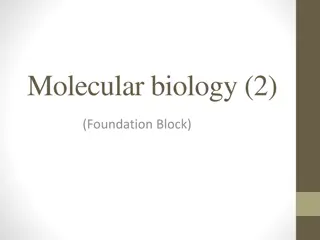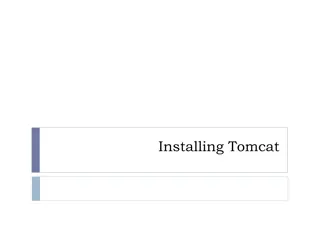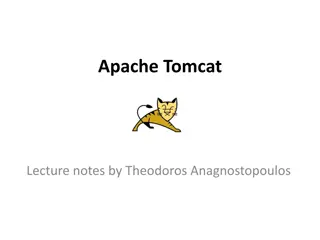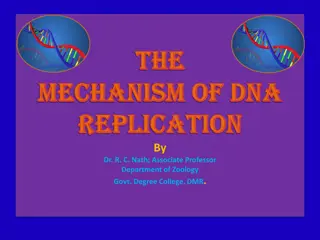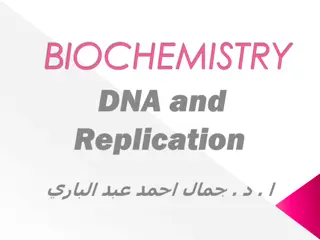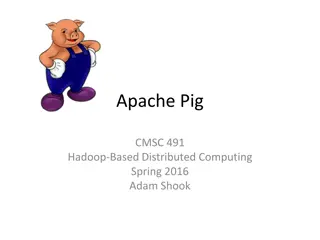Intra-cluster Replication for Apache Kafka
Engineer at LinkedIn discusses Kafka architecture, deployment at LinkedIn, Kafka vs other messaging systems, and Kafka terminologies. Covers topics such as Kafka's usage, performance, and design. Includes images and examples of Kafka applications at LinkedIn.
Download Presentation

Please find below an Image/Link to download the presentation.
The content on the website is provided AS IS for your information and personal use only. It may not be sold, licensed, or shared on other websites without obtaining consent from the author.If you encounter any issues during the download, it is possible that the publisher has removed the file from their server.
You are allowed to download the files provided on this website for personal or commercial use, subject to the condition that they are used lawfully. All files are the property of their respective owners.
The content on the website is provided AS IS for your information and personal use only. It may not be sold, licensed, or shared on other websites without obtaining consent from the author.
E N D
Presentation Transcript
Intra-cluster Replication for Apache Kafka Jun Rao
About myself Engineer at LinkedIn since 2010 Worked on Apache Kafka and Cassandra Database researcher at IBM
Outline Overview of Kafka Kafka architecture Kafka replication design Performance Q/A
Whats Kafka A distributed pub/sub messaging system Used in many places LinkedIn, Twitter, Box, FourSquare What do people use it for? log aggregation real-time event processing monitoring queuing
Kafka Deployment at LinkedIn Live data center Offline data center Live service Live service Live service interactive data (human, machine) Monitorin g Hadoop Hadoop Hadoop Kafka Kafka Kafka Kafka Kafka Kafka Per day stats writes: 10+ billion messages (2+TB compressed data) reads: 50+ billion messages
Kafka vs. Other Messaging Systems Scale-out from groundup Persistence to disks High throughput (10s MB/sec per server) Multi-subscription
Outline Overview of Kafka Kafka architecture Kafka replication design Performance Q/A
Kafka Architecture Producer Producer Broker Broker Broker Broker Zookeeper Consumer Consumer
Terminologies Topic = message stream Topic has partitions partitions distributed to brokers Partition has a log on disk message persisted in log message addressed by offset
API Producer messages = new List<KeyedMessage<K,V>>(); messages.add(new KeyedMessage( topic1 , null, msg1 ); send(messages); Consumer streams[] = Consumer.createMessageStream( topic1 , 1); for(message: streams[0]) { // do something with message }
Deliver High Throughput Simple storage logs in broker msg-1 msg-2 msg-3 msg-4 msg-5 msg-n topic1:part1 topic2:part1 index segment-1 segment-1 segment-2 segment-2 read() segment-n segment-n append() Batched writes and reads Zero-copy transfer from file to socket Compression (batched)
Outline Overview of Kafka Kafka architecture Kafka replication design Performance Q/A
Why Replication Broker can go down controlled: rolling restart for code/config push uncontrolled: isolated broker failure If broker down some partitions unavailable could be permanent data loss Replication higher availability and durability
CAP Theorem Pick two from consistency availability network partitioning
Kafka Replication: Pick CA Brokers within a datacenter i.e., network partitioning is rare Strong consistency replicas byte-wise identical Highly available typical failover time: < 10ms
Replicas and Layout Partition has replicas Replicas spread evenly among brokers logs logs logs logs topic1-part1 topic1-part2 topic2-part1 topic2-part2 topic2-part2 topic1-part1 topic1-part2 topic2-part1 topic2-part1 topic2-part2 topic1-part1 topic1-part2 broker 1 broker 2 broker 3 broker 4
Maintain Strongly Consistent Replicas One of the replicas is leader All writes go to leader Leader propagates writes to followers in order Leader decides when to commit message
Conventional Quorum-based Commit Wait for majority of replicas (e.g. Zookeeper) Plus: good latency Minus: 2f+1 replicas tolerate f failures ideally want to tolerate 2f failures
Commit Messages in Kafka Leader maintains in-sync-replicas (ISR) initially, all replicas in ISR message committed if received by ISR follower fails dropped from ISR leader commits using new ISR Benefit: f replicas tolerate f-1 failures latency less an issue within datacenter
Data Flow in Replication producer 2 1 ack 2 leader follower follower 3 commit 4 topic1-part1 topic1-part1 topic1-part1 consumer broker 1 broker 2 broker 3 When producer receives ack Latency Durability on failures no ack no network delay some data loss wait for leader 1 network roundtrip a few data loss wait for committed 2 network roundtrips no data loss Only committed messages exposed to consumers independent of ack type chosen by producer
Extend to Multiple Partitions producer leader follower follower topic1-part1 topic1-part1 topic1-part1 producer leader follower follower producer topic2-part1 topic2-part1 topic2-part1 follower follower leader topic3-part1 topic3-part1 topic3-part1 broker 1 broker 2 broker 3 broker 4 Leaders are evenly spread among brokers
Handling Follower Failures Leader maintains last committed offset propagated to followers checkpointed to disk When follower restarts truncate log to last committed fetch data from leader fully caught up added to ISR
Handling Leader Failure Use an embedded controller (inspired by Helix) detect broker failure via Zookeeper on leader failure: elect new leader from ISR committed messages not lost Leader and ISR written to Zookeeper for controller failover expected to change infrequently
Example of Replica Recovery 1. ISR = {A,B,C}; Leader A commits message m1; L (A) F (B) F (C) m1 m2 m1 m1 m2 m3 last committed 2. A fails and B is new leader; ISR = {B,C}; B commits m2, but not m3 L (A) F (C) L (B) m1 m2 m1 m2 m1 m2 m3 3. B commits new messages m4, m5 F (C) L (A) L (B) m1 m2 m4 m5 m1 m2 m4 m5 m1 m2 m3 4. A comes back, truncates to m1 and catches up; finally ISR = {A,B,C} F (C) F (C) F (A) L (B) F (A) L (B) m1 m2 m4 m5 m1 m2 m4 m5 m1 m2 m4 m5 m1 m2 m4 m5 m1 m2 m4 m5 m1
Outline Overview of Kafka Kafka architecture Kafka replication design Performance Q/A
Setup 3 brokers 1 topic with 1 partition Replication factor=3 Message size = 1KB
Choosing btw Latency and Durability When producer receives ack Time to publish a message (ms) Durability on failures no ack 0.29 some data loss wait for leader 1.05 a few data loss wait for committed 2.05 no data loss
Producer Throughput varying messages per send varying # concurrent producers 70 70 60 60 50 50 MB/s MB/s 40 40 no ack no ack 30 30 leader leader 20 20 committed committed 10 10 0 0 1 10 100 1000 1 5 10 20 messages per send # producers
Consumer Throughput throughput vs fetch size 100 80 60 MB/s 40 20 0 1KB 10KB 100KB 1MB fetch size
Q/A Kafka 0.8.0 (intra-cluster replication) expected to be released in Mar various performance improvements in the future Checkout more about Kafka http://kafka.apache.org/ Kafka meetup tonight
